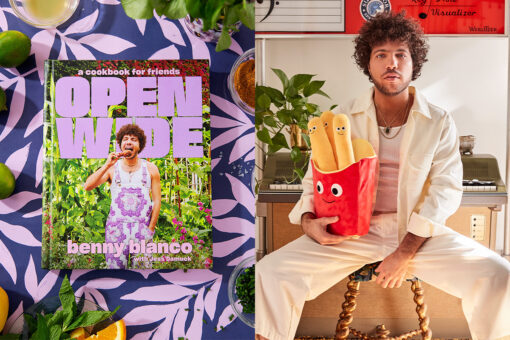I was 24 years old the first time I got called up to the Torah. It was Simchat Torah 5780 (2019), and I was an attendant at Sydney’s Women’s Tefillah Group (WTG).
I had started attending the group’s events at the insistence of my best friend Sarah. Her mother is one of the founders of the group, and Sarah has been involved her whole life: she read from the Torah with them for her bat mitzvah, she learned to leyn (read with cantillation) Megillat Esther for Purim at a young age. She is Torah literate in a way I’m not sure I’ll ever be.
The previous year, Simchat Torah 5779, I had refused an aliyah — I just couldn’t bring myself to stand up and get one. The WTG does this thing where it reads the Torah portion over and over again until everybody who wants an aliyah has gotten one. I remember being in awe of woman after woman standing up at the bimah and being a part of a tradition that was kept from us for so long.
That year, I was the only woman in the room who didn’t get an aliyah.
I regretted it as soon as I got home.
* * *
I was 19 years old the first time I saw a woman even hold a Torah.
A few different synagogues had joined together to dance in the evening of Simchat Torah, a joyous holiday when we celebrate the conclusion of the annual Torah reading cycle and start a new one. We stood in a hall where a measly white mechitzah (partition) hung between the men and women. The men’s side was bigger than ours, and their loud singing drowned out even a hint of the voices that were coming from the women. We stood, for the most part, around the edges of our space, only a few women venturing into the middle to dance.
A member of the WTG held onto a Torah as she danced, and I remember how care-free she looked. I admired the way she wasn’t bothered by the men’s loud voices, nor by the looks some of the other women were giving her. Other women held the Torah during the hakafot (organized rotations of singing and dancing with the Torah), but I don’t remember who they were. I didn’t hold the Torah that night.
I did hold it the next day, at the youth minyan, away from the prying eyes of the middle aged women who glared.
* * *
Sydney is an interesting place to be halachically observant. I say — somewhat self-deprecatingly — that if the halachic world is 20 years behind the rest of the world, then Sydney’s about 10 years behind that. In some ways, it can be open-minded and relaxed, the way a lot of beachside places tend to be. But for the most part, the religious community has been hesitant when it comes to changes it deems a threat.
For some reason, feminism falls under that category.
Maybe I should write a disclaimer now, halfway through this piece. I’m sure many people from my community don’t feel the way I feel, and think that our community is plenty progressive and inclusive.
But I’m not so sure.
I went to an ultra-Orthodox school for 13 years and only really learned how to pray on Shabbat well into my high school years. In my youth minyan, the girls were always shushed, even while the boys continued to talk. Sometimes it felt as though the mechitzah hung between me and my Judaism, its white lace stained and dirty.
Slowly, I watched things change: Our rabbi sat us down and outlined why it was perfectly fine for women to hold a Torah, and more young women started dancing with it, finding comfort in the weight of the scrolls they carried. I know for others it was different; their mothers had been involved in the WTG, they had learned to read the Torah, they always felt at home in synagogue. But still, it felt foreign to me. Still I felt the mechitzah between the Torah and me.
* * *
Agi is my first cousin twice removed, my grandfather’s first cousin. I’m telling you this detail because I’m Jewish and knowing exactly how I’m related to Agi is a very important part of Jewish culture. I had only met her for the first time in December 2017, mostly due to the fact that I live in Australia and she lives in Canada and those places are very far apart and not conducive to family reunions.
My next visit to Canada was in August 2019. Again, I must tell you these benign details because I’m Jewish and you should know that the weather during this visit was disgustingly hot. I was only there for 10 days, a quick little visit so I could go to my friend’s wedding and see my cousins. While I was there, I made sure to contact Agi, and she said she wanted to take me to some museums.
Our third stop of the day, after the Museum of Contemporary Art and lunch, was the Textile Museum. I should tell you at this point that I have never sewn anything in my entire life. I do not know how to knit. One time I tried to learn to crochet a kippah and it was a disaster.
I entered the museum with a less-than-genuine smile.
The exhibition Agi took me to see was called Torah Stitch by Stitch. It showcased a project started by Torontonian artist Temma Gentles in 2013 that soon caught international attention. I gasped audibly as I saw the project for the first time: a giant tapestry that wrapped around several rooms at the museum — a giant Torah scroll cross-stitched in four-verse segments. The project itself was so big, they could only display parts of Genesis, Exodus, and Deuteronomy.

Not yet completed, it’s been stitched together by almost 1500 volunteers from around the world, a majority of them women, and not all of them Jewish. It’s no longer on display at Toronto’s Textile Museum, but its creators still have big plans for what’s coming next.
I left the exhibition with tears in my eyes.
I thanked Agi for a wonderful day out, but in particular, I thanked her for taking me to see the giant Torah scroll that filled up a whole museum floor with its kedusha, its holiness.
* * *
I blame a lot of things on what I call internalized religious misogyny, but I think my relationship with synagogue and Torah reading is at the top of the list. Despite my love of singing, I wouldn’t dare learn how to leyn. And for some time now, I’ve loved observing women’s tefillah from the peripheries, yet unable to take that next step into it.
But Torah Stitch by Stitch changed something for me. There’s something spectacular about seeing a Torah made out of a traditionally “feminine” medium, made by women from around the world. Women who wanted to be involved in any way they could in the creation of something holy. I know too many women who are happy to sit on the sidelines and watch as Jewish things happen. But the older I get, the more I seek out the women who want to be in the center of it all, who want to be a part of the Jewish things instead of silent observers. They, too, want to cross-stitch the Torah for themselves, for their daughters, and for their friends.
* * *
So there I was, Simchat Torah 5780, standing at the Torah. The Gabbait (the woman who assists with Torah readings) said my Hebrew name (Shoshana Pearl, daughter of Hillel and Rochel Leah) and then I listened as my friend leyned. I touched a cloth to the page and then to my lips, and that was it.
I sat back down as the next woman was called to the Torah. I thought it would feel revolutionary.
It did not. Instead, it felt normal and natural, like I should’ve been doing it my whole life.
At some point after me, a newly bat mitzvah’d girl stood at the bimah with the biggest smile I’ve ever seen. She watched as the yad moved across the scroll, following along as best she could.
That’s when it felt revolutionary: watching this young girl connect with the Torah in a way 24-year-old me had always struggled to. I knew girls like her would grow up in a community different than the one I grew up in. Their community is changing, a place where women getting called to the Torah is normal. It’s a form of Orthodoxy I’ve been chasing my whole life, one where participating in Jewish ritual doesn’t make you stand out.
Some people may read this and shake their heads at Orthodoxy, and others may read this and still not understand why women feel the need to read from the Torah at all. But I’m writing this for those of you who, like me, feel suffocated by the religious misogyny that’s held us back for so long. I hope you see this as a reminder that there’s a place for us in our communities, as hope for change that’s definitely on its way, and as a sign that this Simchat Torah, you should hold that Torah as tightly as you can — you aren’t the first woman who’s held it, and you definitely won’t be the last.
Header image design by Emily Burack. Photograph of Torah by Jan Hakan Dahlstrom/Getty Images.



